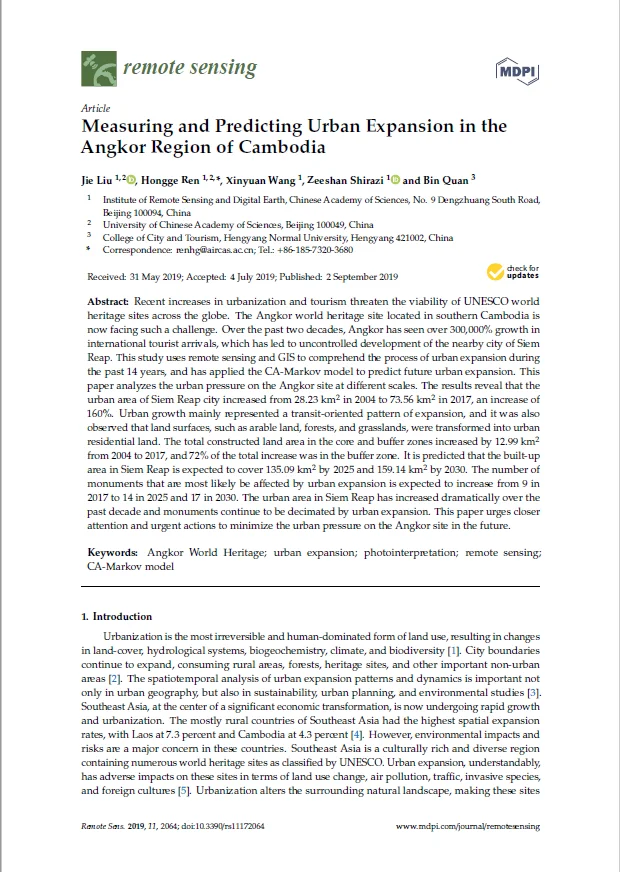
Recent increases in urbanization and tourism threaten the viability of UNESCO world heritage sites across the globe. The Angkor world heritage site located in southern Cambodia is now facing such a challenge. Over the past two decades, Angkor has seen over 300,000% growth in international tourist arrivals, which has led to uncontrolled development of the nearby city of Siem Reap. This study uses remote sensing and GIS to comprehend the process of urban expansion during the past 14 years, and has applied the CA-Markov model to predict future urban expansion. This paper analyzes the urban pressure on the Angkor site at different scales.